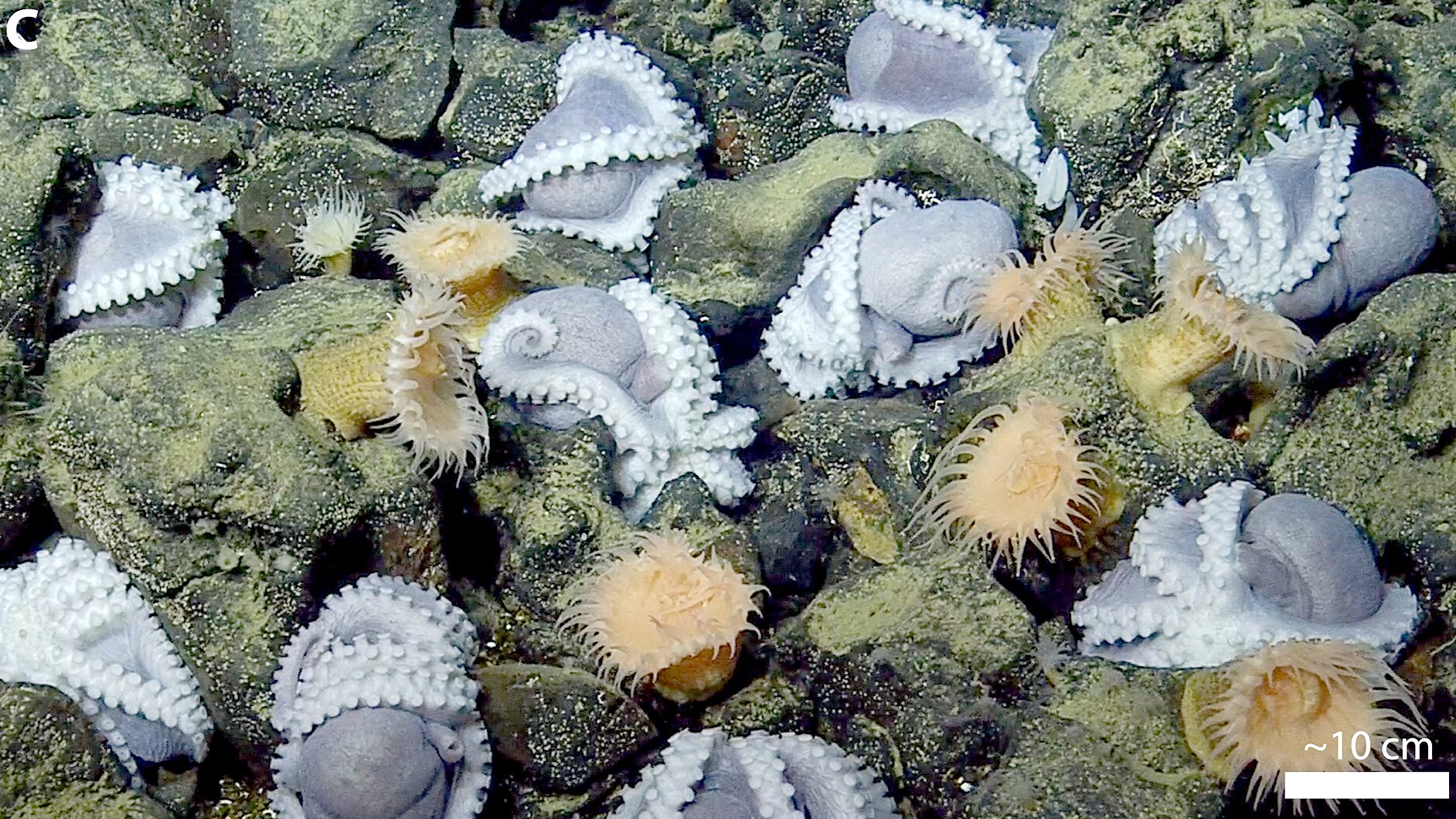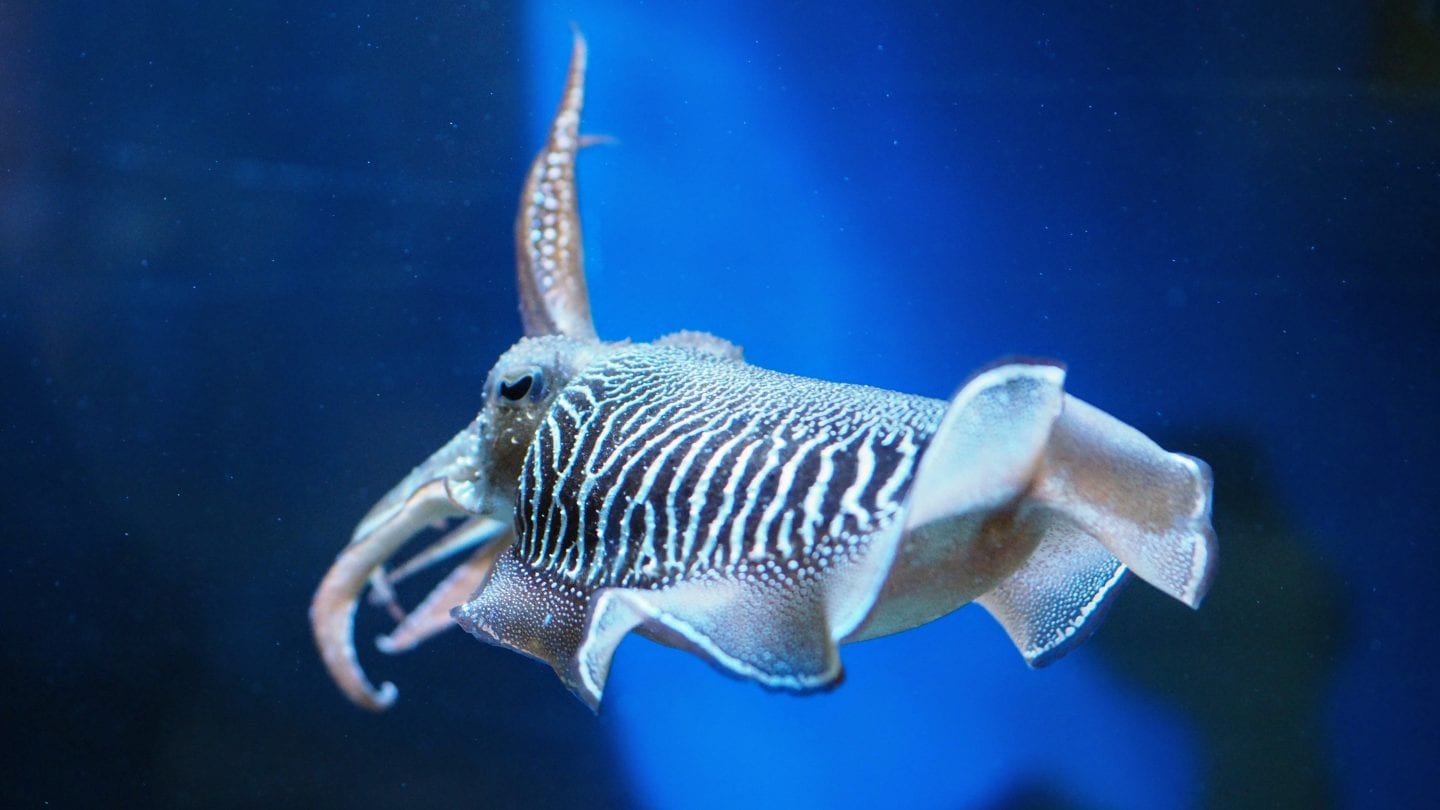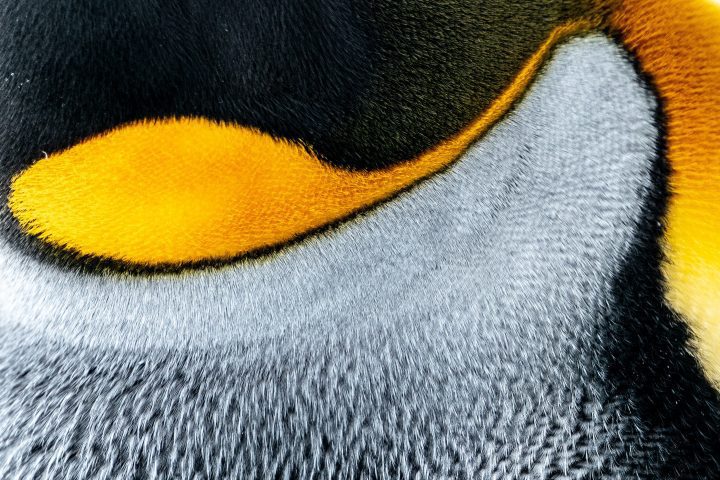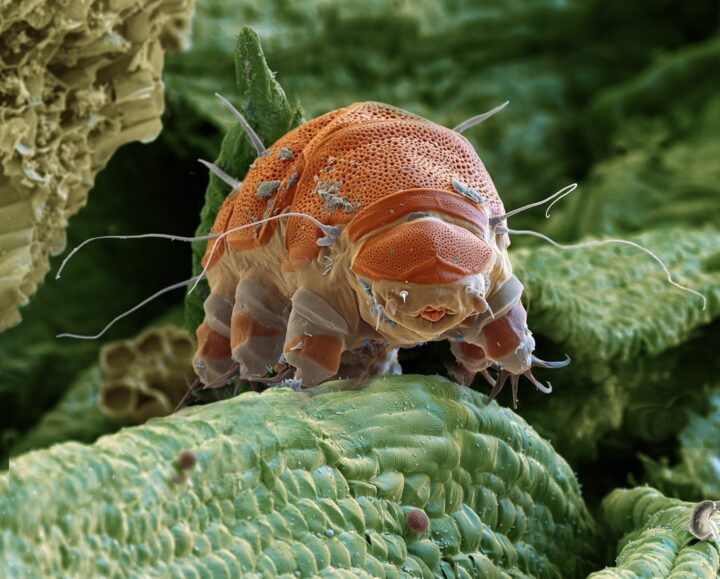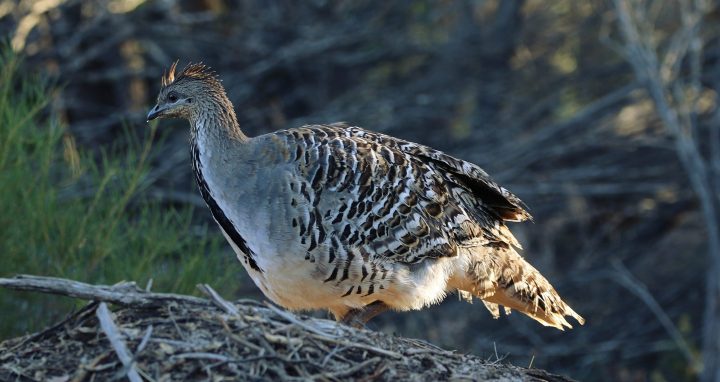Thousands of octopuses nurture their eggs in hydrothermal vent communities by utilizing warmth for energy-efficient development.
Introduction
Deep off central California, in the chilling abyss of the ocean, thousands of octopus (Muusoctopus robustus) migrate to the warmth of hydrothermal springs near an extinct volcano to mate, nest, and die. This forms the largest known aggregation of octopus on Earth, a unique ecosystem nicknamed the “Octopus Garden,” found at depths ranging from 3175 to 3300 meters.
The Strategy
These octopuses are remarkable for their migratory behavior to specific thermal springs, located at the Davidson Seamount off Central California. Their environment is characterized by cold dark waters, where the temperature typically slows down metabolic processes. The hydrothermal springs present a unique microenvironment, providing warmth that raises metabolic rates, speeds embryonic development, and enhances reproductive success.
M. robustus finds suitable nesting sites on rocky outcrops near warm springs within the abyssal landscape. These rocky surfaces, kept clear of fine sediments by currents and hydrothermal flows, offer an ideal location for egg attachment.
Warmth from the hydrothermal springs plays a vital role in the biology and ecology of these abyssal animals. The elevated temperature at the springs shortens the brood times for female octopuses to approximately 1.8 years, far faster than expected for abyssal octopods. This increase in temperature, compared to the surrounding cold deep-sea habitat, hastens the pace of embryogenesis and shortens the duration of incubation. The warmth not only affects the health and survival of developing embryos but also helps in mate finding, reducing the “loneliness” effects observed in sparse populations. Beyond their direct influence, these springs indirectly boost the carbon budget for the local biological community, as the octopuses, once deceased, provide an organic carbon pool to support other life forms.
This unique behavioral ensures reproductive success for the octopuses, allowing them to thrive in otherwise inhospitable deep-sea environments. By choosing to breed in localized warm spots, they maximize their fitness, providing a suitable environment for the healthy development of eggs and hatchlings.
The Potential
Energy Efficiency and Renewable Energy:
- Utilizing Geothermal Heat: Just as octopuses use hydrothermal vents to incubate their eggs, we can use geothermal energy to heat our homes and other buildings. This is a renewable resource that takes advantage of the Earth’s internal heat.
Conservation and Sustainable Practices:
- Creating Protected Marine Zones: Understanding the critical role hydrothermal vents play in the lifecycle of the deep-sea octopus could lead to more focused conservation efforts. Creating protected zones around these areas may preserve not only octopuses but entire ecosystems.
- Thermal Management in Agriculture: Studying how octopuses utilize heat for breeding could inspire innovative ways to manage heat in agricultural settings, optimizing energy use and improving the sustainability of food production.
Healthcare and Wellness:
- Innovations in Incubation Technology: The way octopuses utilize warmth for the growth of their eggs can be a model for innovations in human incubation technologies, possibly leading to more efficient and natural methods for caring for premature infants.
AI on AskNature
This page was produced in part with the assistance of AI, which is allowing us to greatly expand the volume of content available on AskNature. All of the content has been reviewed for accuracy and appropriateness by human editors. To provide feedback or to get involved with the project, contact us.
